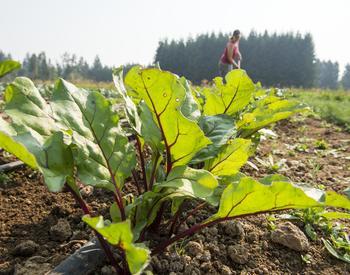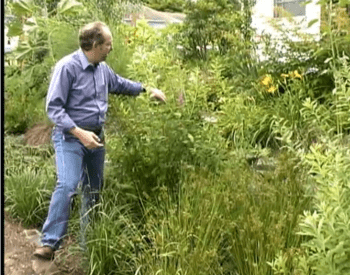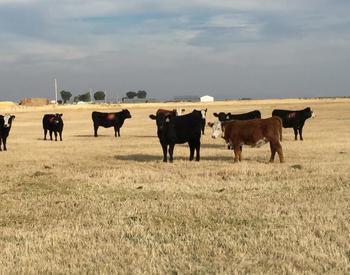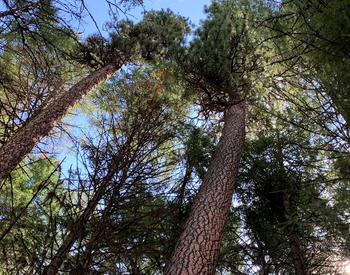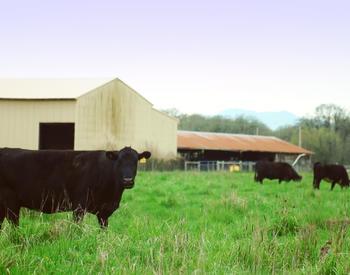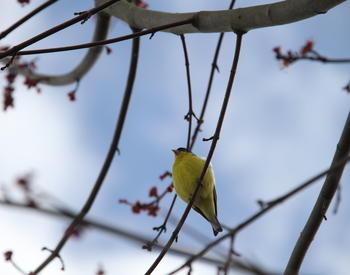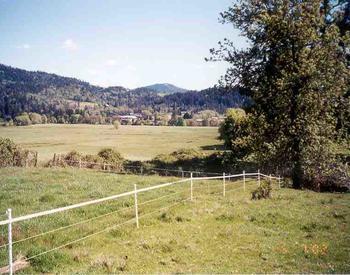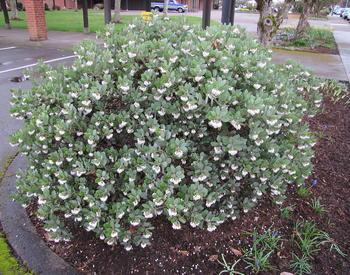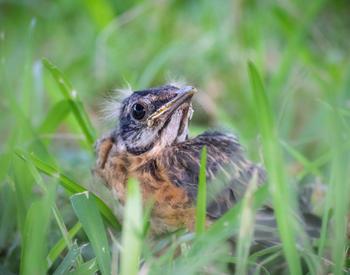CORVALLIS, Ore. – In 2009, Diane Choplin traded high heels and an urban apartment for 5 acres in rural Ashland. Within weeks, she stumbled on the Oregon State University Extension Service Land Steward Program.
“I was waddling around the Grange Co-op, six months pregnant and in search of soil amendments when I saw a flyer for the program,” she said. “I signed up that same day for the first co-hort. My son came with me, snug in his baby carrier. I was lucky to come across the program. I treasure the connections I made with other Land Steward volunteers, socially and practically.”
Dedicated to helping landowners achieve a viable and sustainable vision for their property, the Land Steward Program consists of online courses, community classes, land tours and workshops. Participants walk through a wide range of topics relevant to rural living and stewardship, according to Rachel Werling, coordinator for the statewide program.
The 2022 Land Steward Program will be online via Zoom with instruction from Werling, who developed the curriculum with Max Bennett, OSU Extension forester, and a working group of volunteers and partners. The series appeals to new owners of woodlands, pastures and small farms. Soon-to-be buyers get a head start by taking the course. Even some urban-oriented people sign up for the program, which teaches techniques for managing a property’s resources more effectively.
Some stewards, like Choplin, focus on invasive species but there are a host of subjects, including pasture management, wildfire preparation, streamside restoration, wildlife stewardship and rural economics.
The program started in Jackson County in 2009 as a collaboration between an OSU Extension Master Gardener and an Extension forester. Participants are required to complete 30 volunteer hours after graduation. Land Stewards put 10 hours of volunteering into helping the program, but also work with natural resources agencies and nonprofits.
So far, the program has served more than 540 people who are managing about 20,000 acres of land, Werling said. In 2021, the Land Steward Program expanded to 18 counties led by five regional OSU Extension instructors. Students came from other states and Canada, as well. In surveys and in person, reaction to the program is clearly positive.
“I’m very proud to say I have been through the program,” one participant wrote in a survey. “The experiences were life- and career-changing. There is no better teacher than being able to witness your training and education first-hand out in the field. Each class was extremely informative and our time was fully utilized with interesting and enjoyable experiences.”
Planning to manage land
Last year, on a late September day, Werling led a class to two woodland properties near Jacksonville. The owners talked about their management efforts and students saw thinned and un-thinned stands, different types of forests, trails, roads and equipment. They practiced tree identification and conducted a tree health and forest site assessment, as they do with each module. Clint Nichols of the Jackson Soil Land Water Conservation District talked about the usefulness of a management plan.
As they were meant to, the soon-to-be Land Stewards realized the importance of such a document. Not only does a plan offer a window into problems, but it also illustrates what they’ve accomplished. Werling said 77% of those replying to a survey said that creating the management plan during the course was very effective or effective in helping them develop and meet their land stewardship goals.
“My biggest hope is they will be systematically thinking through the needs of their land,” Werling said. “A plan helps you think about it a lot more clearly. It helps you feel less overwhelmed. It really is satisfying. People say, ‘Oh, look at all things I’ve done.’ It’s amazing.”
Sometimes landowners discover what they thought was a problem really isn’t. One participant was worried about dead fish in their riparian area. It turns out the fish were spawning salmon completing their lifecycle. Problem solved.
Some topics are perennial. For example, everyone wants to know about mistletoe’s effect on oak trees, Werling said. But there’s nothing to worry about.
“Mistletoe is generally not considered something you have to manage,” Werling said. “It actually adds diversity. It’s native and feeds the birds. People think it kills trees, but it causes more damage to cut it out.”
At site visits – which are planned to return in 2023 – presenters discuss topics like mistletoe that landowners ask about repeatedly. Then they concentrate on one of the modules. Both the professional and the owner of the visited site give their perspectives and information. Questions pour from landowners, Werling said, one of the advantages of onsite visits, which weren’t possible in 2021.
The 2021 online version of the Land Steward training drew a hefty 84 registrants. Once participants finish the modules, the all-important stewardship planning process is available at the click of a mouse for landowners to download and complete.
The information in the nine modules and at onsite events, is only half of Werling’s objectives for the Land Steward Program. Connections between landowners is a high priority. Students get to know each other, which forges mutually beneficial relationships.
“For years a neighbor, who was also in the first cohort, would do the maintenance on my tractor in exchange for borrowing it now and again,” said Choplin. “Just this week he lent me his electric chainsaw-on-a-stick to prune my trees. In between we enjoyed a lot of good conversation.”
Discovering resources
People appreciate discovering the resources available to them. When people begin the course, they often don’t know what’s available to help them with their land management problems and goals. The Land Steward Program opens their eyes. Watershed experts, Oregon Fish and Wildlife employees, soil and water conservation specialists and others talk about their resources and provide contact information so landowners easily know where to go with questions. A survey showed that 100% of new Land Stewards are more connected to professional and technical resources since they completed the course.
Choplin, a former photography teacher who owns Bel Avenir Farm in Ashland and has plenty of gardening experience, was unprepared for the responsibility of managing livestock and large-scale production. She determinedly took it on but didn’t know where to start. Her Land Steward leader gave advice she’s taken to heart: Go slow.
When she moved to her farm, Choplin had to deal with weed-choked, shoddily fenced pastures, overgrown orchards and an enormous thicket of blackberry covering her creek.
“It was a beautiful mess,” Choplin said. “I had so much to do and it’s easy to get stuck in the weeds of projects. So, I appreciated it when Rhianna (Simms, OSU Land Steward leader in Jackson County), encouraged me to focus on one species for eradication. I chose blackberry. We came up with a plan for restoring the riparian area and replacing blackberry with native species.”
It was a monumental task of 440 hours just to remove the blackberry, but Choplin, with help from volunteers and a matching grant from the Jackson Soil and Water Conservation District, was able to clear and replace the blackberry.
“There were only so many hours I could dig burls with a toddler in tow and working part-time,” Choplin said. “Through the Land Steward program, I made connections enabling what would otherwise have been a prohibitively expensive project for time and funds. I’ve learned so many other things, too, and all very transferable to raising and selling pastured lamb.”


